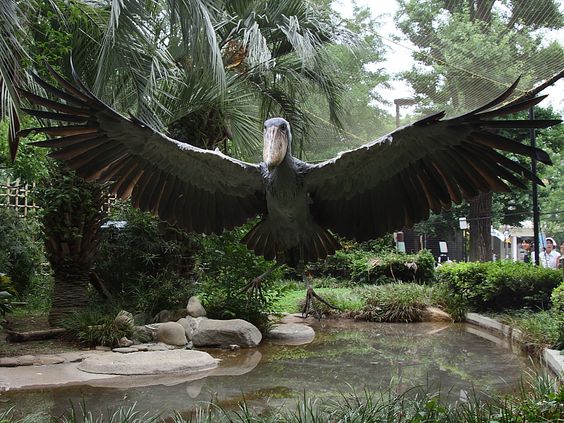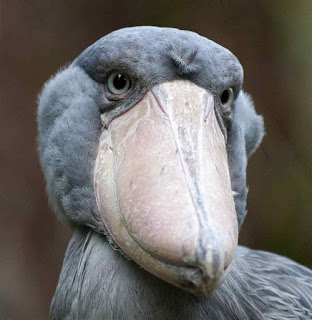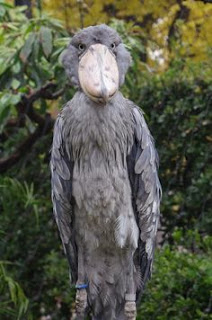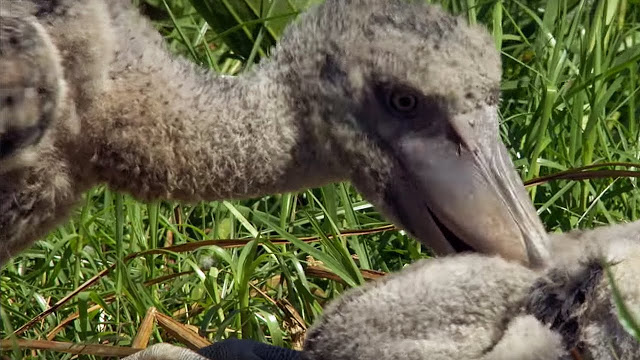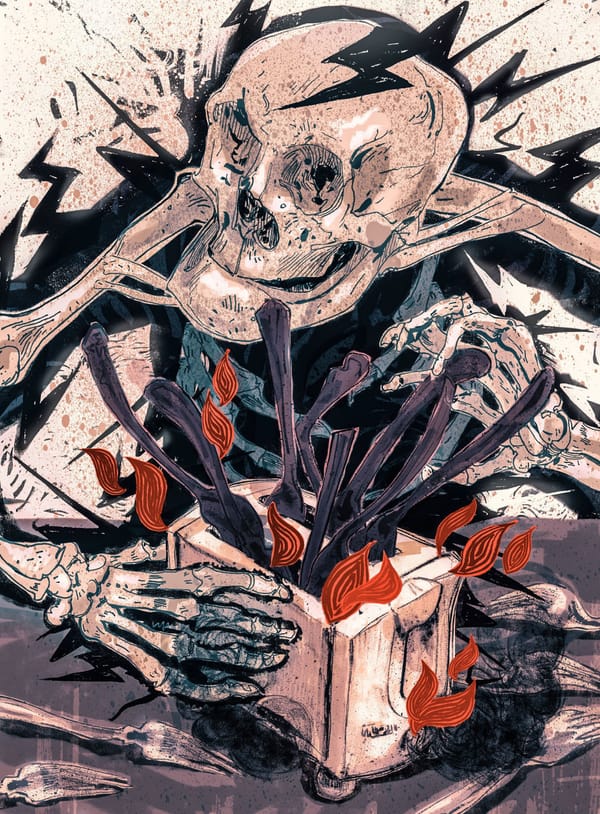after a long hiatus, we’re back! And I’m going back to my my roots — my first love: fauna
Balaeniceps rex (King Whalehead), the
shoebill stork, naturally lives in the swamps of tropical eastern Africa (the great lakes area of Africa) and shares familial traits with other
Ciconiiformes, like the
Asian openbill, the
Jabiru, and a myriad of storks by many names. all of these birds are long-necked, long-legged, waders with hard bills which feed in shallow waters on fish and amphibians. as an aside, groups of storks tend to either be called a ‘muster’ of storks or, my personal favourite, a ‘phalanx’. contrary to popular belief, storks only deliver the babies of fish and amphibians and only from the trials of this mortal coil…
all
Ciconiiformes lack any type of vocal cords and are, thus, silent creatures, for the most part. shoebills, however, make up for this by clicking their beaks together in what ends up sounding like automatic rifle fire —
listen here. it doesn’t seem real…
the shoebill stands ~3-5 feet tall, weighs ~9-15 pounds, with a wingspan of ~7.5-8.5 feet — that’s roughly two feet shorter in wingspan than the current largest Andean Condor, but it is still very wide and ideally suited to soaring flight.
if you take a look, you’ll also quickly notice that they look a lot like Muppets, from the right angle…
the shoebill varies from other Ciconiiformes in a variety of ways but most notably when it comes to its beak, from whence it derives its name. in fact, in Arabic, it is called abu markub, meaning ‘father of the shoe’. most Ciconiiformes have long, thin bills (think of Aesop’s The Fox and the Stork), but the shoebill has a broad and, comparatively, short one — usually around 24 cm long and 20 cm wide. further, their bills have a nasty, sharp little hook at the tip of the upper mandible (good for tearing at siblings, as you’ll see below) and the sides on both top and bottom are very sharp.
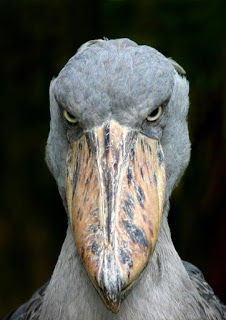
there are great benefits to this style of bill which mostly come into play when
fishing. a shoebill will stand in perfect stillness for hours, observing the gently flowing water below, until it spots a lungfish or a monitor lizard or a baby crocodile (yes, they eat little crocodiles). then it dives its bill into the water, scooping up the prey and all nearby plants and mud. this leaves the prey hanging horizontally with its head out one side and its tail out the other. the shoebill rolls its head from side to side to pour out the excess water, plants, and mud and then placidly chomps down, severing the tail and head and swallowing what remains — vicious and efficient.
other benefits include fighting off predators and
other shoebills as well as
trying to kill off their little siblings — they aren’t nice, these guys. In fact, if you follow through a little further in that siblings video, you’ll notice that the momma shoebill, upon returning with water for her two little shoebillies (which I can only assume is the official name of little shoebills… or should be), she notices the signs of the shoebillies scuffle and elects to ignore the smaller, weaker, younger one and only give water to the winner… cold, momma shoebill… cold…
the shoebill also differs from other Ciconiiformes when it comes to its thick neck (extra muscles for obvious reasons) and it extra long, spindly legs. the middle toe on each of these long, flamingo-like, legs is ~7 inches long and the other toes are about that long. these long toes and long, thin legs make it easier for the shoebill to stand and keep still in the water when fishing. however, it takes the shoebill quite some time after birth, comparatively, to be able to walk or even stand up due to the imbalance between their silly, skinny legs and their enormous, heavy beaks. good thing momma sticks around to keep predators at bay (at least, keep the non-older-sibling ones at bay, that is).
in order to keep cool while supporting its large body on those spindly legs, the shoebill does what no other bird does — it poops on its own legs. the evaporation of the liquid from the runny bird feces in the hot air takes away some of the excess heat from the legs, directly cooling them down and generally cooling down the bird altogether. poop-conditioning… clever and gross all at once.
so, the shoebill is a unique and marvelous bird that has captured the curiousity of explorers and naturalists for generations — there are even many of them on ancient Egyptian papyrus scrolls! too bad they are so mean to their siblings…
so far on shoebill storks
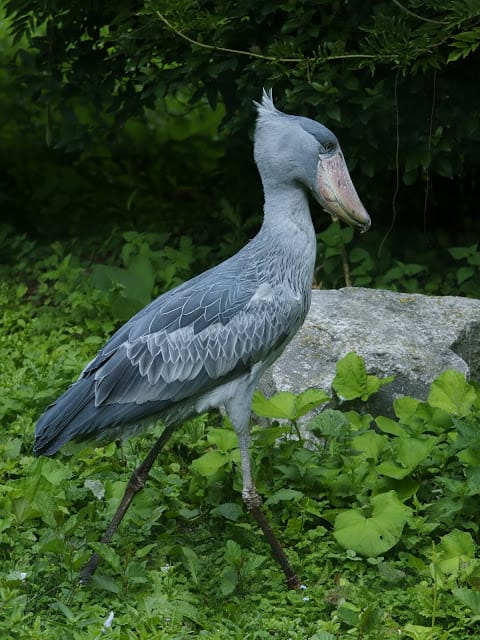
 there are great benefits to this style of bill which mostly come into play when fishing. a shoebill will stand in perfect stillness for hours, observing the gently flowing water below, until it spots a lungfish or a monitor lizard or a baby crocodile (yes, they eat little crocodiles). then it dives its bill into the water, scooping up the prey and all nearby plants and mud. this leaves the prey hanging horizontally with its head out one side and its tail out the other. the shoebill rolls its head from side to side to pour out the excess water, plants, and mud and then placidly chomps down, severing the tail and head and swallowing what remains — vicious and efficient.
there are great benefits to this style of bill which mostly come into play when fishing. a shoebill will stand in perfect stillness for hours, observing the gently flowing water below, until it spots a lungfish or a monitor lizard or a baby crocodile (yes, they eat little crocodiles). then it dives its bill into the water, scooping up the prey and all nearby plants and mud. this leaves the prey hanging horizontally with its head out one side and its tail out the other. the shoebill rolls its head from side to side to pour out the excess water, plants, and mud and then placidly chomps down, severing the tail and head and swallowing what remains — vicious and efficient.